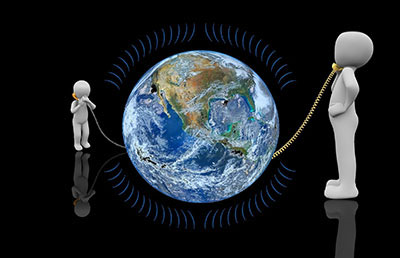Most businesses today have several incoming telephone numbers, each one used for a different purpose or department such as customer service, sales, marketing etc. Some companies even have the ability to assign a personal phone number to each employee without requiring multiple physical phone lines, making it possible for telephone traffic to be split up and managed more easily. This powerful framework is only achievable using Direct Inward Dialling (DID).
DID, also known in Europe as DDI (Direct Dial-in), is a service offered by telephone companies, that allows organizations, who operate a private branch exchange (PBX) system, to have multiple telephone numbers lines connected to one or more analog or digital physical circuits to their PBX. The system sends the dialed telephone number to the PBX so that an outside caller can have direct access to the PBX extension, possibly avoiding an auto-attendant.
In a business with DID, the telephone company provides one or more trunk lines to the company’s PBX and allocates a range of telephone numbers. When calls are made to such numbers they are forwarded to the customer’s PBX via the trunks. As calls are presented to the PBX, the phone company uses DID signaling to identify the number using a prearranged format.
Before, this was done by pulsing the last four digits of the number being dialed before connecting the number. The PBX would use these DID digits to forward the call directly to the right telephone extension without the need for an operator or attendant.
In more practical terms, if a company has 100 employees and each employee has a personal telephone number, the company can rent 30 physical telephone lines or trunk lines, allowing up to 30 phone calls to take place simultaneously. Other inbound calls would either get a busy signal until one of the lines is free or be directed to a voice mail system. The PBX can automatically direct a call for a given phone number to the appropriate workstation in the company.
With VoIP communications, DID works likewise and in order for PSTN (public switched telephone network) users to directly reach VoIP users, DID numbers are assigned to a gateway, which in turn connects the PSTN to the VoIP network and routes all calls between the two networks for the VoIP user. Incoming calls from the PSTN will be forward to the VoIP user with the matching DID number.
A DID Number is extremely useful for businesses to provide local telephone numbers for customers on a worldwide basis. For example, if a company is based in the US, but its customers are mainly in China, then the firm needs to have China numbers for its Chinese customers to easily call the business. Those Chinese numbers will be redirected to the company’s US phone number.
Telephone carriers, VoIP companies, mobile operators and other communications service providers purchase DID numbers from companies such as DIDWW, Voxbone, DIDNumbers.com and DIDlogic, to then resell to their consumer, small and medium business customers, universities and more. These customers buy DID phone numbers that are local to the people whom they want to start receiving calls from.
All in all, a DID number is a local telephone number in a selected country or city that offers companies, not only the ability to have numerous phone numbers, but also the power of making it easy for their customers to make and receive calls from all over the world. Learn how to choose the right DID provider for you.







